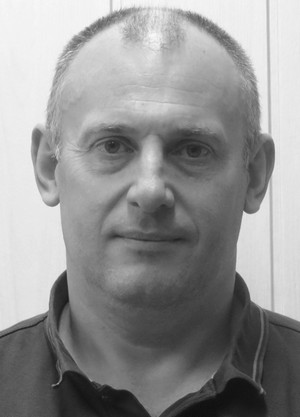Training load partitioning by lift groups in powerlifting
Фотографии:
ˑ:
Teoriya i praktika fizicheskoy kultury №6 2016, pp. 76-78
UDC 796.015
PhD, Associate Professor Ya.E. Yakubenko
Moscow Aviation Institute (National Research University), Moscow
e-mail: zhjckfd9@yandex.ru
High priority is being given today to the training load partitioning models for different training mesocycles in powerlifing sport for the reason that the existing powerlifter training systems designed for different weight classes and skill categories based on the training experience of the leading athletes – still leave much to be desired. An objective of this study is to help improve the training load design and partitioning based on analyses of the training records and practical experience of leading athletes.
Competitive success of athletes is known to largely depend on how well designed is the training process in every training mesocycle. Subject to the study was an 8-weeks-long pre-competitive training cycle broken down in two mesocycles, namely the controlled preparatory mesocycle (CPMS) scheduled for 8-5 weeks prior to the target competition; and the pre-season mesocycle (PSMS) taking 4-1 weeks prior to the event. It should be noted that the existing pre-season training systems are dominated by bench press lifts regardless of the athlete’s skill level, weight class and training mesocycle. This is due to the fact that bench press practices claim the lowest muscular mass in the training process as compared to the squats and deadlifts. Rated second and third in the total training load profiles are squats and deadlifts, respectively. Notwithstanding the fact that the both lifts engage the same muscle groups and the lifted weights are close enough, the squatting practices are more dynamic and the squat performance speeds are higher than that in deadlifts. This is the reason why the athlete’s muscles are less strained by squats and, hence, faster recoverable. Furthermore, in squat movement sequence the athlete takes full advantage of the elastic energy of his/her own muscles, tendons and special supportive equipment that helps perform the lifts. These are the key reasons for the commonly accepted proportions of squats and deadlifs in the training load profiles. The only exclusion are the Class I athletes and lightweight (LW) Candidate for Master of Sport (CMS) in the controlled preparatory mesocycle (CPMS) when they normally make more weight lift counts (WLC) in deadlifts than in squats.
Practical recommendations of the study for the powerlifters’ training load partitioning propose to apply specific model training load profiles.
Keywords: powerlifting, weight lift count; training mesocycle; weight class; model rates; squat; bench press; deadlift.
References
- Verkhoshanskiy Yu.V. Osnovy spetsial'noy silovoy podgotovki v sporte (Fundamentals of special strength training in sport) / Yu.V. Verkhoshanskiy. – 3rd ed. – Moscow: Sovetskiy sport, 2013. – 216 p. : il. ISBN 978-5-9718-0609-7
- Sheyko B.I. Pauerlifting. Ot novichka do mastera (Powerlifting. From the novice to master) / B.I. Sheyko, P.S. Gorulev, E.R. Rumyantseva, R.A. Tsedov; ed. B. I. Sheyko. - Moskva, 2013. - 560 p.: il.
- Sheyko B.I. Pauerlifting (uchebnoe posobie dlya studentov vyisshikh uchebnykh zavedeniy) (Powerlifting (textbook for students of higher educational institutions). - Moscow: JSC «EAM SPORT SERVICE 2005. - 544 p.
- Yakubenko Ya.E. Sravnitel'ny analiz ob'ema trenirovochnoy nagruzki v pauerliftinge u muzhchin v zavisimosti ot kvalifikatsii i massy tela: Avtoref. dis. … kand. ped. nauk (Comparative analysis of amount of training load in men's powerlifting with regard to skill level and body weight: abstract of PhD thesis) / Ya.E.Yakubenko: RGUFKSiT. – Moscow, Print Tsentr, 2006. – 24 p.
- Yakubenko Ya.E. Model'nye velichiny ob'emov trenirovochnoy nagruzki v pauerliftinge (Model values of training load volumes in powerlifting). Scientific-methodical journal "Ekstremal'naya deyatel'nost cheloveka", 2015, №2(35), P. 30-32.
Received 11.04.2016 г.




 Журнал "THEORY AND PRACTICE
Журнал "THEORY AND PRACTICE